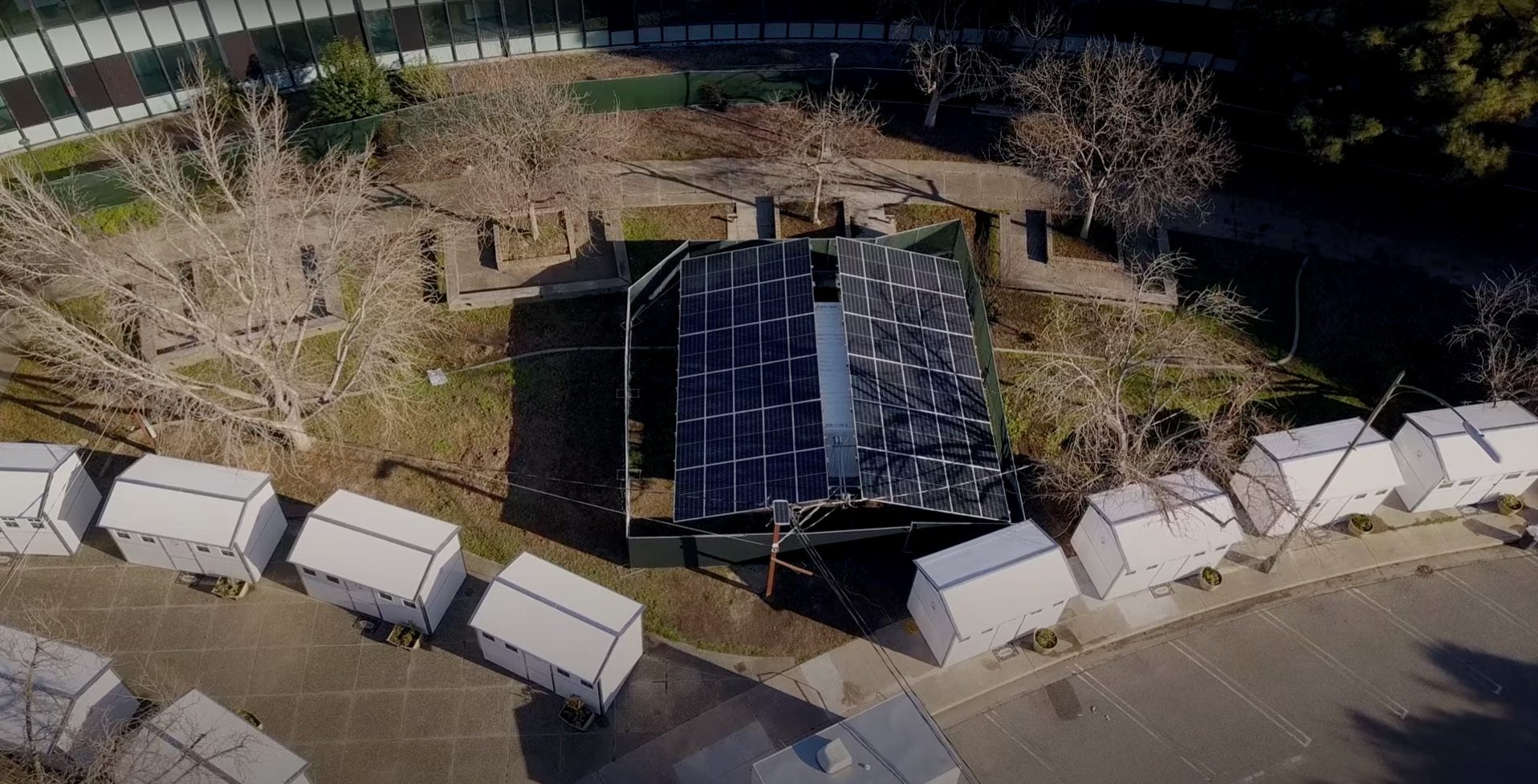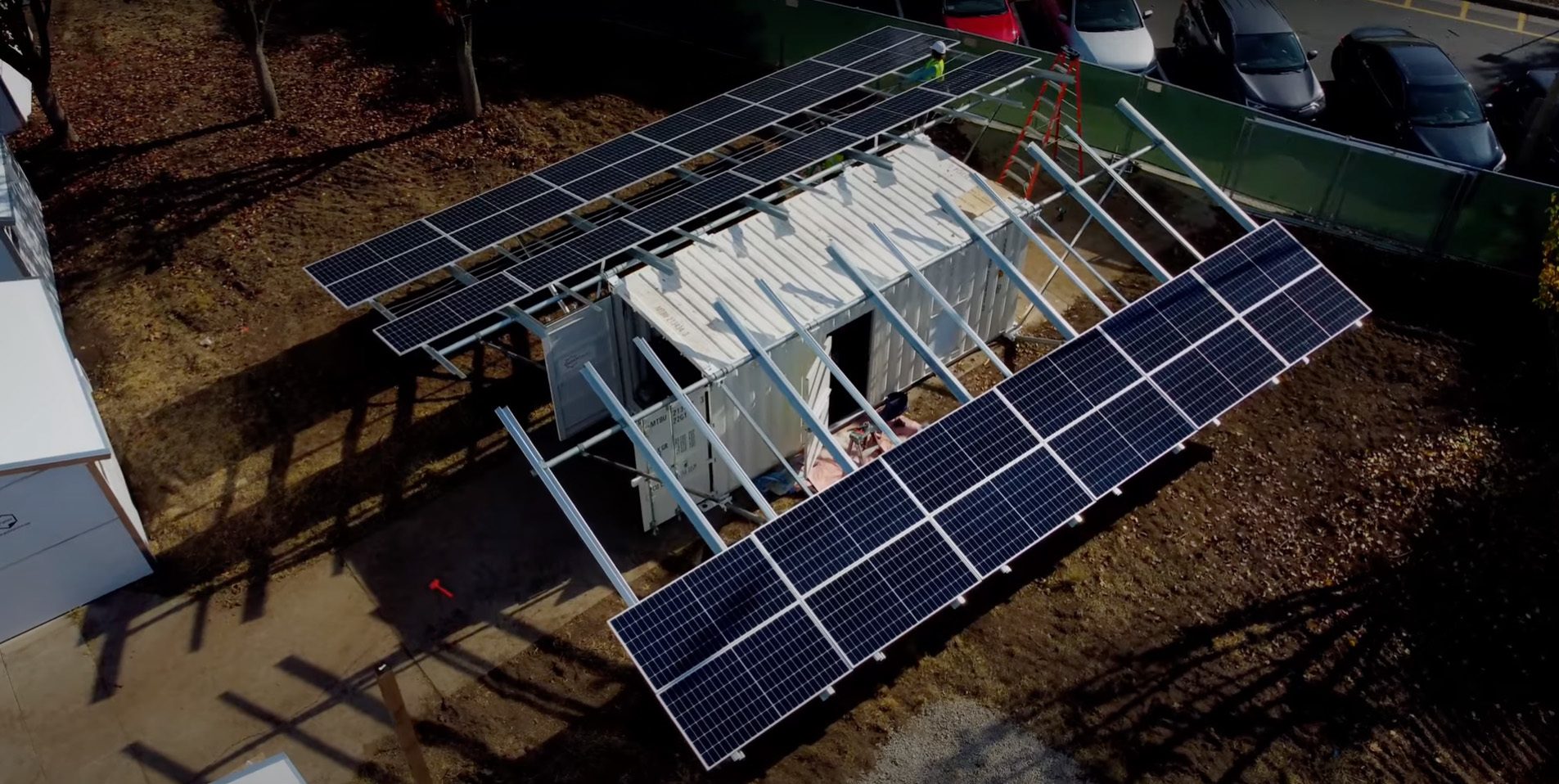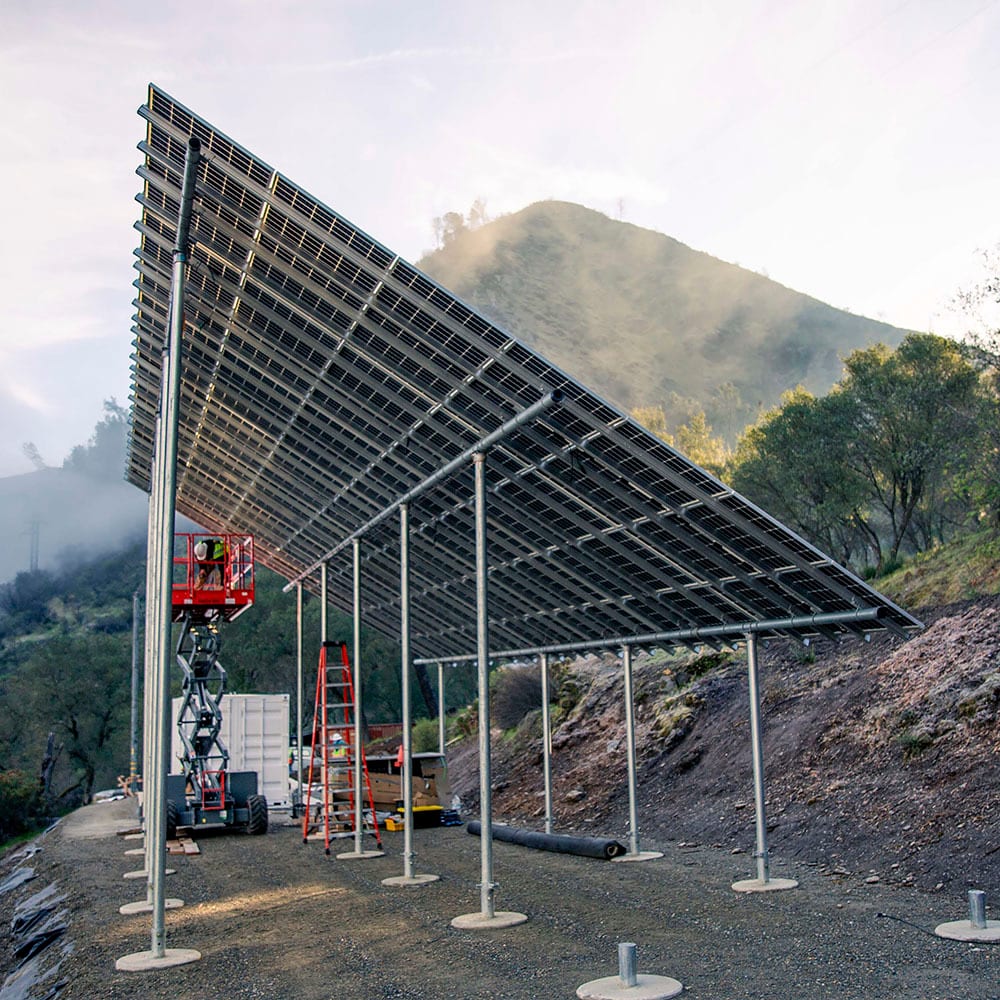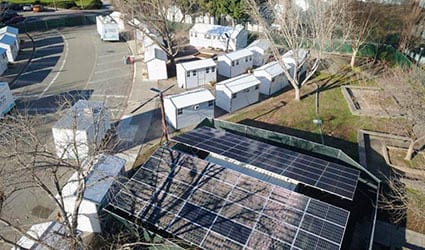COMMERCIAL CONSTRUCTION TRENDS
A California shelter community combines solar power with propane generators to prove that resilient design doesn’t have to trade off reliability.
Are Clean, Renewable Microgrids the Future of Energy?
In 2019, supportive housing officials in California’s Santa Clara County unveiled an innovative plan to shelter unhoused persons in the city of San Jose: a cluster of twenty-five 100-square-foot tiny homes providing stability and dignity for families experiencing homelessness. The community was dubbed Casitas de Esperanza, or “Tiny Homes of Hope.”
Despite their small footprint, each unit includes folding bunk beds, storage, windows, space heaters, and air conditioning. And while individual shelters were powered, the community site itself lacked access to reliable grid power—a capital expense that would’ve cost the county upwards of $650,000 and taken at least eight months to implement. Instead, officials turned to BoxPower, makers of turnkey microgrids energy solutions combining solar power, battery storage, and backup propane generators.
Microgrids are designed to efficiently distribute power to a cluster of nearby buildings. While a microgrid’s primary power supply is often the main electrical grid, it can also operate independently in the event of a planned or unplanned main power grid outage, thanks to renewables such as solar or wind, as well as backup energy sources including propane. As a result, a microgrid is more resilient, as well as affordable, sustainable, and safe. By collecting and storing electricity from solar panels and wind turbines, the microgrid only uses its propane generator as needed, making it incredibly efficient and environmentally friendly. Every aspect of the microgrid’s performance is locally controlled at a centralized station.





For these reasons, microgrid solutions like the system at Casitas de Esperanza are gaining traction across the United States. For areas experiencing an increase in wildfires such as California, on-site microgrids can be more cost-effective than upgrading existing grid utilities and can be configured to the essential power loads of a targeted local area. Microgrids are highly transportable and can be used anywhere. They are particularly valuable in projects that can’t afford an energy disruption, like hospitals, police stations, and military facilities.
Backup generators in wind- or solar-based microgrid solution ensure consistent power, keeping microgrids running during prolonged periods without sun or viable wind. Because the California Air Resources Board (CARB) has adopted some of the most progressive emissions and air quality regulations in the country, propane was the clear energy choice for Casitas de Esperanza’s backup generators. As a fuel source, propane produces significantly fewer greenhouse gas emissions than diesel, gasoline, or in many cases, even electricity. Air quality was an equity concern to the officials planning Casitas de Esperanza; with generators situated so close to the shelters, powering with propane ensured that these unhoused individuals would not need to worry about toxic emissions or noise associated with diesel or gasoline generators.
Casitas de Esperanza is a high-profile example of the transformative impact of microgrids for communities and organizations in need of clean, consistent, and equitable power. Solar-powered microgrids with propane backup generators will only become increasingly attractive as resilient design with the incorporation of renewable propane, a chemically-identical alternative to conventional propane made from plant stock, animal fat, or used cooking oils. Backup generators fueled with renewable propane in solar- or wind-powered microgrid systems will offer a compelling energy solution for sustainable decarbonization and consistent power.